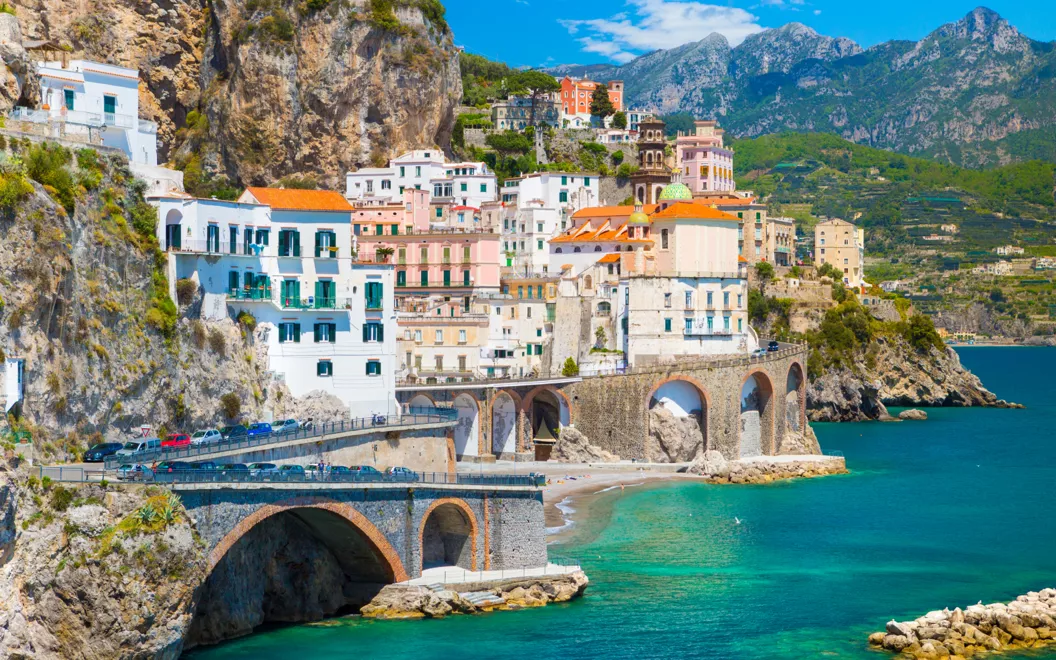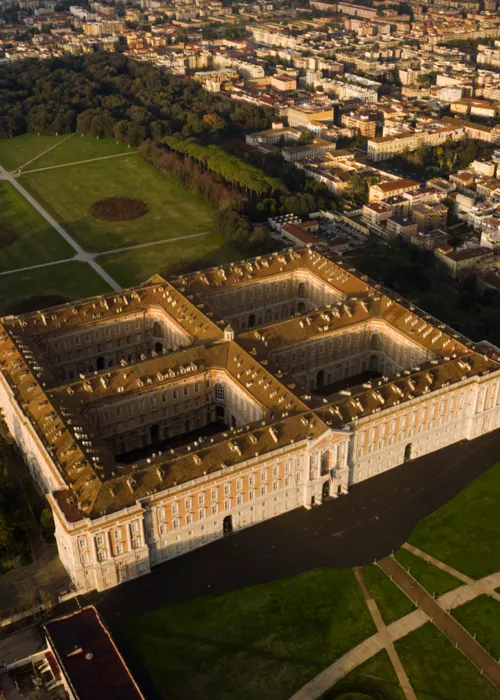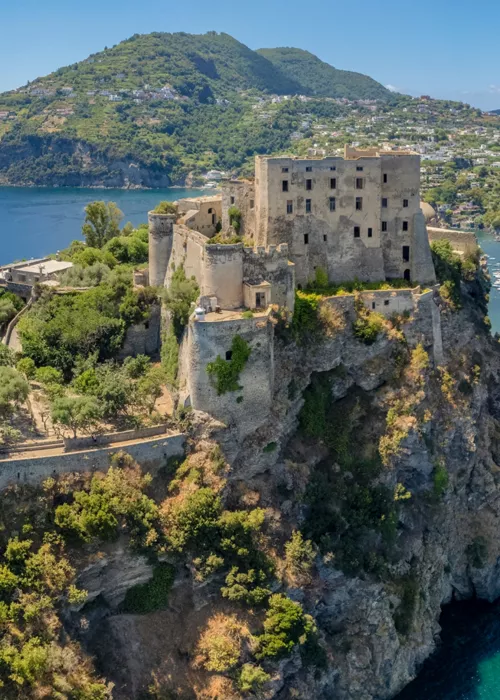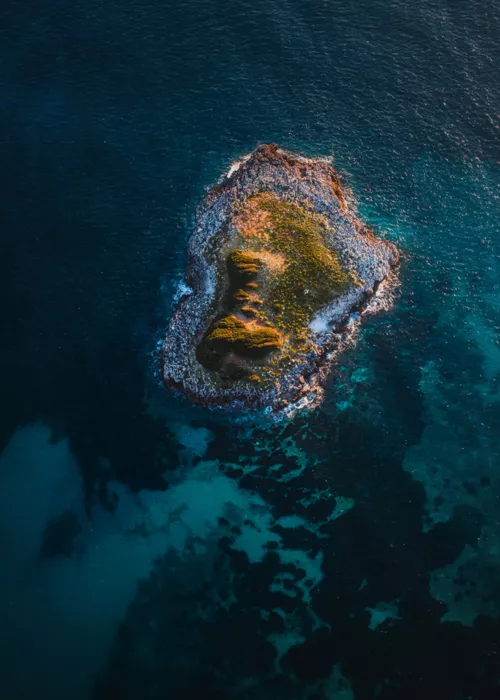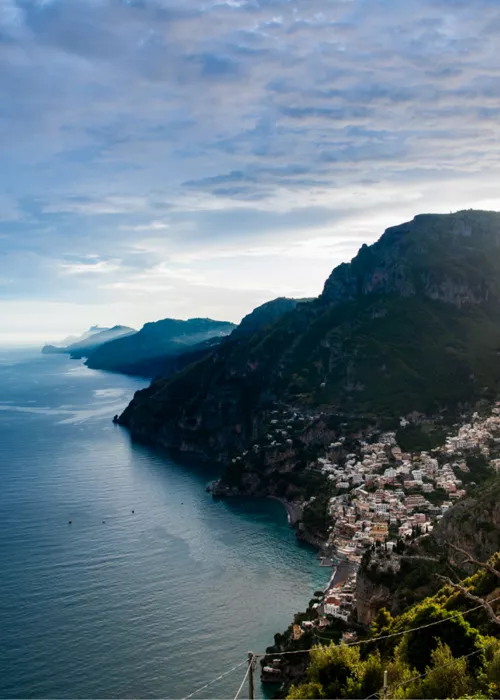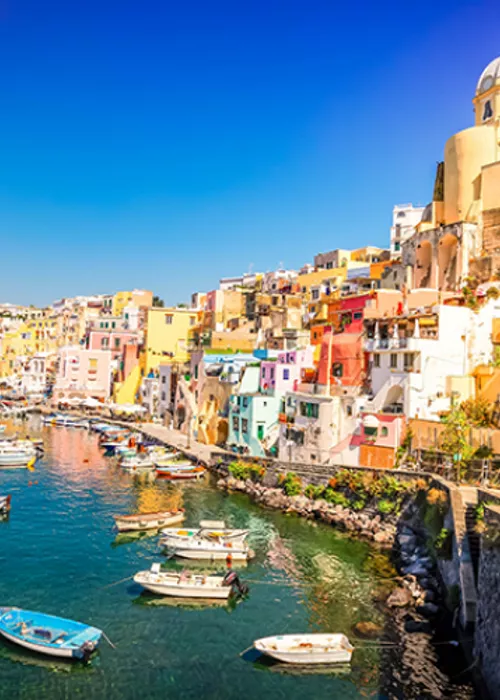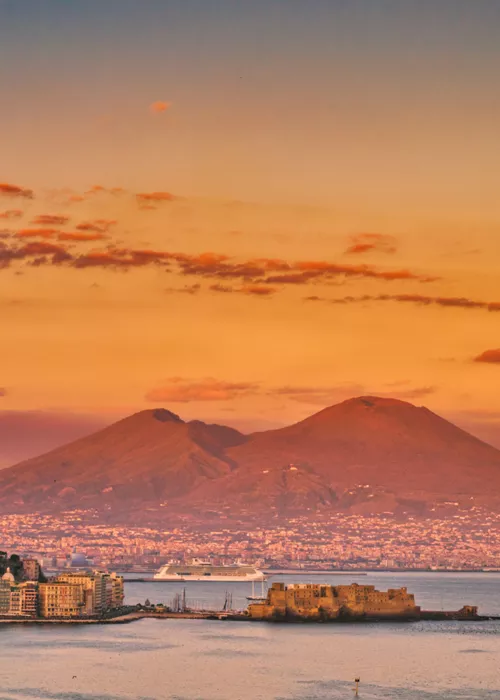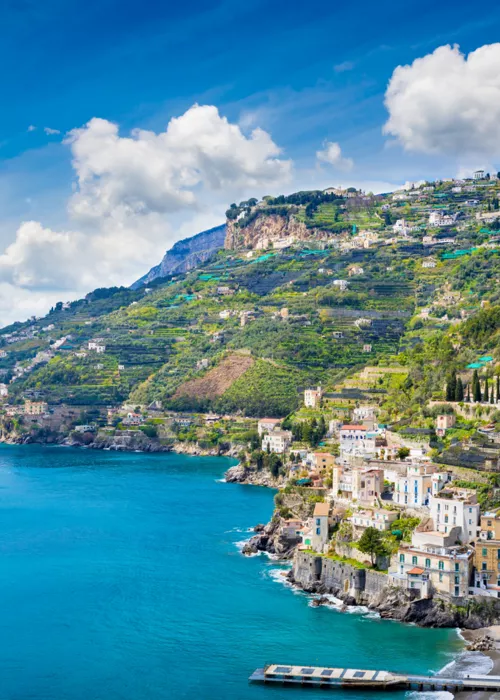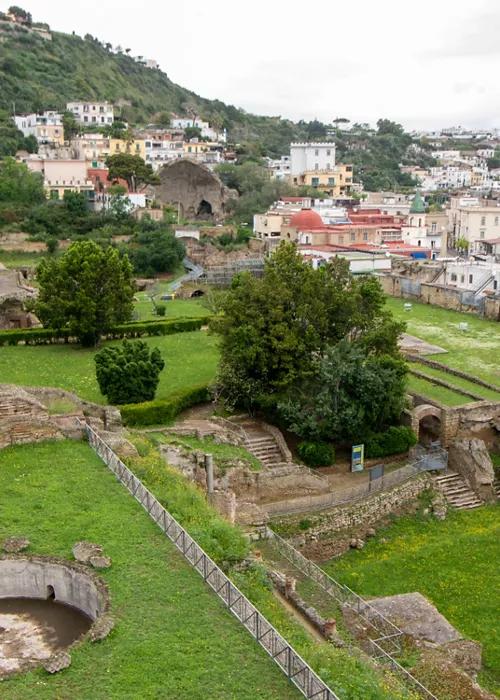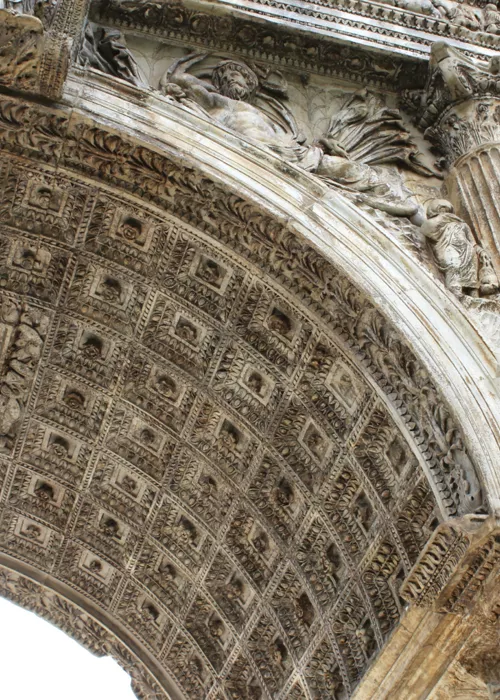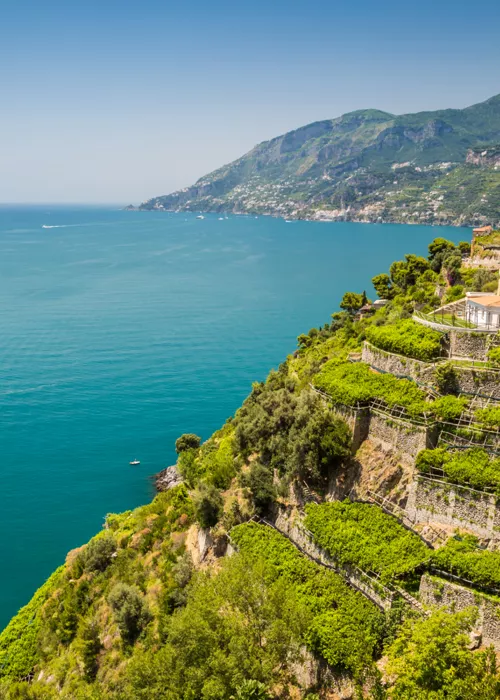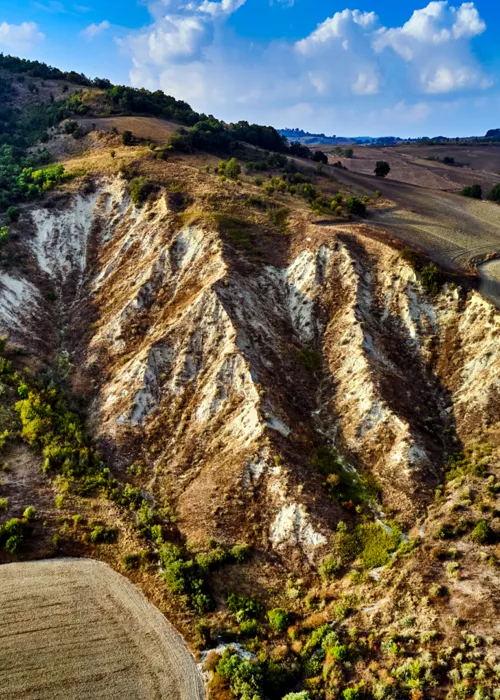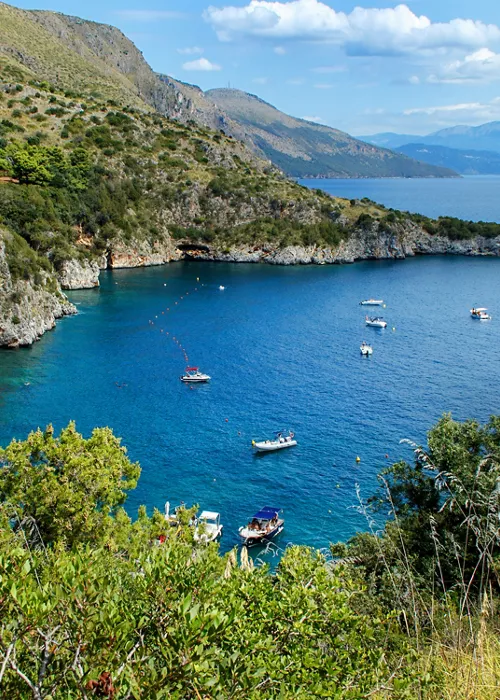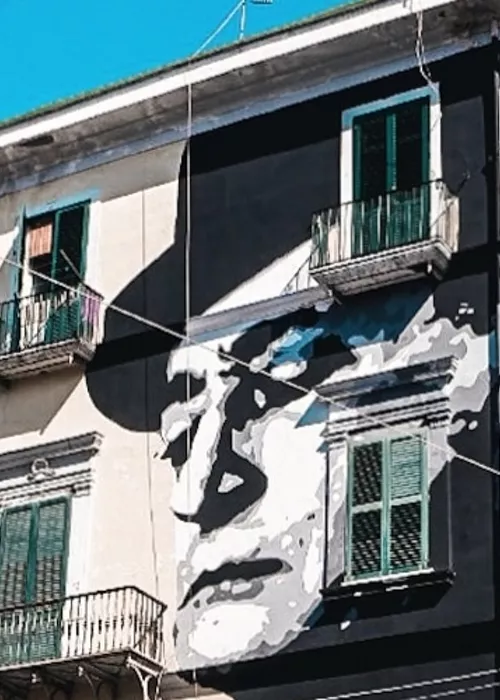Cathedral of St. Mary of the Angels, St. Matthew and St. Gregory VII

The visit can only start from the historical centre of Salerno, crossed by the famous Via dei Mercanti, testimony to the city's ancient commercial activity and today an elegant shopping street. As you walk along it, you will pass picturesque corners and admire ancient architecture, such as the Roman baths of the Complex of San Pietro a Corte, transformed in Christian times into a church and the private burial chapel of Arechi, a Lombard prince.
Then, not far away, the majestic cathedral, a Norman legacy, emerges. Built in the Romanesque style by Robert Guiscard over the early Christian church of Santa Maria degli Angeli, itself erected on the remains of a Roman temple, Salerno Cathedral was consecrated by Pope Gregory VII and houses the relics of St. Matthew, the city's patron saint, in its beautiful Baroque crypt.
Don't miss the characteristic manor festival, celebrated on 21 September, and the solemn procession through the streets of the centre with the simulacrum of the saint. On this occasion, you can enjoy the traditional dish of the day: spleen stuffed with herbs, cooked with oil and vinegar.
Minerva Garden

From the cathedral, a characteristic street, tracing the ancient decumanus of the Roman city, named after Trotula De Ruggiero, the first gynaecologist in history, leads to the marvellous Botanical Garden of Minerva. In this terraced area you will find around 300 species of medicinal plants, used by the Scuola Medica Salernitana, a scientific institution dating back to the 6th century AD.
The long staircase, emphasised by cruciform pillars supporting a wooden pergola, visually connects and frames the different levels of the garden and offers one of the most evocative views of the sea, the old town and the hills. Sitting comfortably at tables in the Tisaneria, you can sip herbal drinks and admire the surrounding landscape from above.
Arechi Castle

About 300 metres above sea level is the imposing Castle, used by Prince Arechi II as a defensive fortress for the capital of the duchy.
The structure, with its crenellated walls linking the various towers, dominates the city from above and is the final stage of an easy trekking itinerary of unquestionable charm. An uphill path through the pine forest inside the ancient Lombard walls leads directly to the ramparts, for a 360-degree tour inside the defensive moat.
The Castle is now the Medieval Museum. Inside you will find an exhibition of weapons, coins and ceramics from the golden age of the Lombard period.
Fornelle district

Continuing to walk the streets of the historic centre you will see an example of how tradition becomes one with the contemporary in Salerno .
In one of the oldest and most popular neighbourhoods, where the poet Alfonso Gatto was born and raised, a street art project has come to life. This is the Rione Fornelle, home to the so-called Muri d'autore, a collection of murals signed by prominent street artists. The walls, once salt-worn, are now transformed into open-air poetic representations, a permanent “museum” that brings vitality and creativity to a public space. Poems and thoughts by leading 20th century authors enliven the facades of the buildings, arches, gardens and stairways, and give the district, which continues to retain its “niche” identity, a new charm. Try it to believe it.
Luci d'Artista

Especially during the Christmas period, we invite you to visit Salerno. The magical Luci d'Artista have, in fact, become an attraction for millions of tourists, who pass through every corner of the city with their eyes turned upwards.
The themes of the illuminations change every year and plunge the spectator into a dreamlike atmosphere, which can also be experienced by listening to a narrated recording: just frame the QR code on the map or the event signage from your smartphone to access special content, technical fact sheets and the tale of the lights from the point of view of the guiding characters who animate them.
Finally, see the urban transformation projects that have changed the face of the city thanks to the contribution of international architects, including Oriol Bohigas, Zaga Hadid, Ricardo Bofill, David Chipperfield, Tobia Scarpa, Santiago Calatrava. Find true masterpieces, such as the Maritime Station with its structure in the shape of oyster of light suspended between sky and sea. Or Piazza della Libertà, an immense amphitheatre by the sea with its characteristic arched portico.

